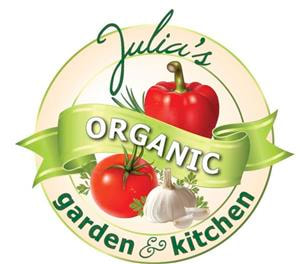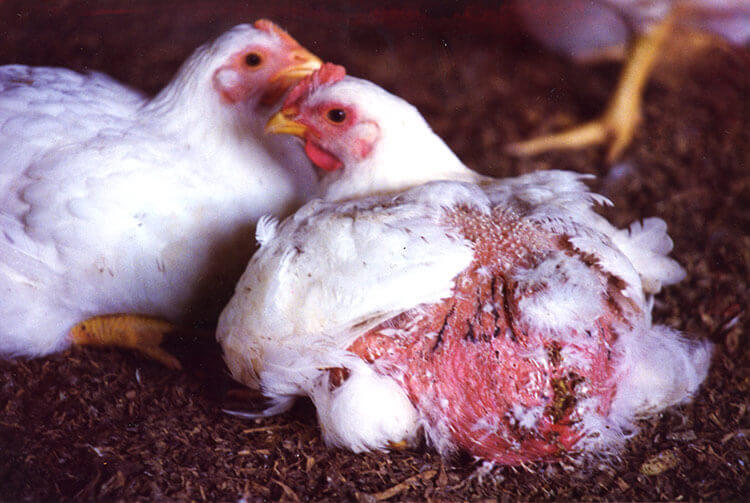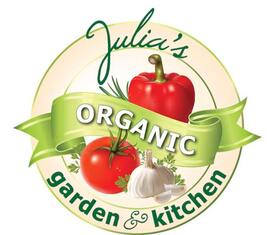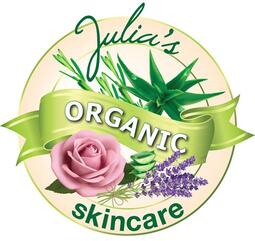|
I have choocks.
They are intelligent, friendly and sociable creatures and very curious…. If I leave my backyard door open, they come inside to say hello. When they are in pain, they scream. I knew that conventional chicken farming in Australia is bad. I didn't know is was that bad. What I've learnt recently makes me quiver. This is what I discovered…. General overview. Chickens are made to roam on a grass, eat bugs and warms, sunbath, perch at night, sit on eggs, see her babies hatched, look after them and so on. In the farms, they are crammed in the shed = (barn – laid eggs) or cage with a lot of artificial lighting, eggs are taken from them as soon as they laid, beaks are trimmed without anaesthetic, they are artificially plumped so much than they can barely walk etc. In other word, its stress, stress, stress... The amount and quality of nutrition of these type of meat and eggs is questionable. Sadly enough, all these cruelty, together with feeding chicken with antibiotics is a legal practice in Australia. Quite a few organisations (Animals Australia, PETA, One Green Planet etc) are trying to change the situation, but the reality is that chicken industry is a multimillion one, where Australia's seven chicken producers tightly control about 800 chicken farms in Australia (1). They are well – organised, have a powerful lobby and they are successfully manipulating consumers perception. Antibiotics. All chickens, except organic, are given antibiotics in their feed as standard “Preventative solution”. They are given Coccidiostats and Salinomycin (2) to prevent development of coccidiosis (type of parasite). The reason they are given those is because chickens are so stuffed in their shed that they literally live on their excrements and breathe with ammonia all their short and miserable life. As PETA put it: “chickens raised for their flesh are often packed by the thousands into massive sheds and fed large amounts of antibiotics and drugs to keep them alive in conditions that would otherwise kill them.(3)” To say it in other words, chickens that live in a clean shed, have access to a fresh water, air and can run on a green grass every day don't need to be given drugs. Yet, there is also another much less discussed reason of giving drugs to chicken – to promote the rapid growth, up to 62% FASTER (4) compare to organic chicken. As Australian Chicken Meat Federation (ACMF) spokesman Jeff Fairbother admitted: “antibiotics are used in products called digestion enhancers but if you don't like that word, a lot of people don't, they call them growth promotants and what these antibiotics do is adjust the gut in the chicken so it gets rid of the unwanted bacteria, so the bacteria that aid the digestion of the chicken's food can proliferate. This is exactly the reason that they are used, so you get the effect of growth promotion. (5)" Its appear that Mr. Jeff Fairbother not quite expertise in the topic as Coccidiostats is not “adjusting bacteria”, but disrupt the natural flora of the gut and Salinomycin increases nutrient absorption across cell membranes in the gut. Both drugs are given to chickens to intensify the nutrition absorption from the food as well as for the reason outlined above. In 1975, it took 64.1 days and 4.66 kg of feed to grow a chicken to 2 kg. In 2011, it takes just 35 days and as little as 3.4 kg of feed5. And here comes the most worrying question: Are we consuming antibiotics together with chicken meat? Mr. Jeff Fairbother don't think that “antibiotic resistance to be a problem at all because if you end up cooking a product, whether the bacteria is a resistant bacteria or whether its an ordinary bacteria, it's going to be killed very easily by the normal cooking process..." However, as a few European researches, including University of Cambridge are suggesting, antibiotics together with some drug – resistant bacteria are still remain in the cooked meat (6), even a "high temperature destruction process does not guarantee a full break-down of residues of veterinary drugs present in condemned animals," the 2000 study from Netherland concluded (7). Cóilín Nunan, a scientific adviser to Save Our Antibiotics group, said the findings should be a wake-up call for supermarkets and the government (8). “They show that many consumers are being exposed to high levels of antibiotic resistance daily at meal time,” Nunan said. “Scientific evidence is accumulating that the overuse of antibiotics on farms is an important contributor to antibiotic resistance in E coli infections”. E. Coli. What is E. Coli? Its a bacteria that in scientific language known as extraintestinal pathogenic Escherichia coli, a form of the bacterium that lives in your intestines and is the most common strain of the bacteria responsible for UTIs. E. Coli – resistant to many types of antibiotics – on 22 of 92 samples. Symptoms of E coli infection normally include a fever, leading to sickness and diarrhoea. “In 80 to 90 percent of routine urinary tract infections, E. coli is the most common cause,8" says Amy Manges, PhD, associate professor in the department of epidemiology, biostatistics and occupational health at McGill University in Montreal (9). Researchers from the Australian National University's Research School of Biology tested more than 90 packages of chicken they bought from different retailers. Professor of microbial population biology and evolution, David Gordon, said almost 200 samples were found to contain E. Coli and of those, about two-thirds were discovered to be antibiotic-resistant strains of E. coli (10). ACMF spokesman reckons that all resistant bacterias “going to be killed very easily by the normal cooking process“, forgetting, however that chicken is not just jumping from shopping trolley into the oven, but also goes into contact with hands, kitchen table, knifes... As Dr Mark Holmes, from the University of Cambridge put it: “The levels of resistant E coli that we have found are worrying. Every time someone falls ill, instead of just getting a food poisoning bug they might also be getting a bug that is antibiotic resistant (11).” Chickens in the factory farms are extremely unhealthy. Most of the consumers believe that the chicken meat is the healthiest one. This is one of the biggest misconception. Non – organic chicken meat is bad for your health. Most of the chickens in the farm are sick. They are mutants with a swollen chests and their legs can't support their bodies. Due to the rapid growth of the birds many of them develop skeletal issues causing lameness. Each year in Australia roughly 165,401,790 chickens will suffer from skeletal issues and lameness impairing their ability to walk (12). Because of that they can't move around and most of the time they lay in the ground in their own excrements, suffer with acidic burns; they can't walk to reach the water, dehydrated, endure from heart failure, respiratory issue etc. Very often, after they killed their bodies washed with chlorine, as they been living in the filth (13). Chickens fed by dead chickens. Its not uncommon to see dead or nearly dead chicken in the farms together with the others. Dead chickens are collected, grinded and added to the poultry food (14). Unfortunately, same species feeding is a legally unregulated in Australia. Animal cruelty. Just to finish the picture of the life of this most abused animals I need to add some more details how they are slaughtered. They are cramped into the track and without food and water travel sometimes thousands kilometres to a slaughter house. By arrival, a hen has an average four bones broken (15) and some of them dead. In the slaughter house they are stunned first, but because chickens are wriggling some of them miss the stunning. Then they hung them by legs and a special blade slit the throat. Its a very painful death. Then they place them in the scalding tank. Free-range-chicken Please don't be mistaken, there is almost no difference between factory farms and free-range-chicken. In Australia there is no binding legal definition for “free – range-chicken”. The code of practice of rising poultry only states that the chickens are given "access to an outdoor range and to indoor shelter". What does it mean in reality? Usually, most chickens don't go outside before they are fully feathered (around 21 days old), and they are killed for meat when they are around 35 days old. Its mean that they spend outside only debatable fourteen days as its too hot, or rainy or windy, they prefer to stay inside. They are also given antibiotics, supplements and unhealthy food.
0 Comments
|
Archives
February 2020
Categories |
Julia Organic Copyright 2021 Website MapMyBusiness


 RSS Feed
RSS Feed



